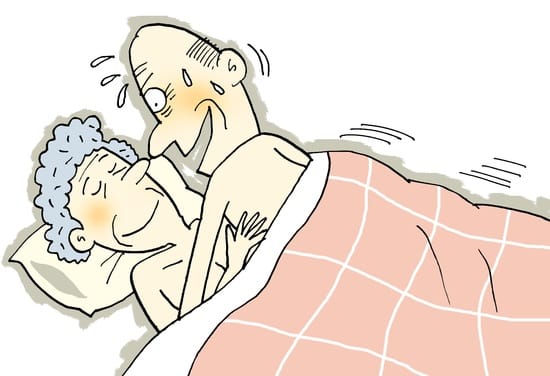Little is known of the male climacteric.
When does it occur, if it develops? Is it a constant occurrence? What is the specific symptomatology? Should sex-steroid-replacement techniques be employed? What, if any, are the patterns of sexual responsivity engendered by these replacement techniques? So little is known of the male climacteric.
Now that these definitive laboratory studies can be done with some confidence, relative rapidity, and at not too staggering a cost, much more will be known of the male climacteric within the next few years.
There will be more basic information on the effects of steroid replacement not only upon the aging male’s sexual response cycle per se but also, and infinitely more important, upon the total metabolic function of the climacteric male.
Without the gross advantage of fully supportive laboratory data, tentative clinical conclusions have been drawn concerning the influence of steroid-replacement techniques upon the aging male’s sexual functioning.
These conclusions may have to be restarted or even possibly abandoned in the not-too-distant future as more definitive information is accrued from the healthy combination of clinical and laboratory evaluations.
When the male notices alteration of his orgasmic response pattern from the usual two-stage to a one-stage process, when he consistently responds during an orgasmic experience with the loss of seminal fluid volume without significant ejaculatory pressure, when the average ejaculatory volume is cut at least in half, and when none of these reactions develop under the extenuating circumstances of a long-continued plateau phase of voluntary ejaculatory control, he may be experiencing the physiological expression of reduced production of male sex-steroid to metabolically dysfunctional levels.
Occasionally prostatic pain develops from spastic contractions of the organ during the ejaculatory process.
These spastic contractions create a continuing sense of ejaculatory urgency that may last through the entire orgasmic experience until full expulsion of the seminal-fluid bolus has occurred.
With the subjectively painful evidence of physiological prostatic spasm recurring with most ejaculatory experiences and no obvious pathology of the prostate gland demonstrable to adequate urological examination, sex-steroid replacement also may be indicated.
Until there is a more reliable laboratory definition of a general metabolic need for testosterone replacement and until the clinical existence of the male climacteric can be defined with security during treatment of older men for sexual dysfunction, individual eases must be treated empirically.
If the sexually dysfunctional male describes physiological or psychological symptomatology that appears to indicate a clinical need for the sex-steroid replacement and if the general physical and laboratory evaluations are negative, there is no professional hesitancy to institute such replacement techniques.
However, sex-steroid-replacement techniques are not employed routinely for the 50 to 70 year age group man referred for therapy.
Steroid replacement concepts and specific techniques, together with indications and contraindications for the aging male will be presented in more complete form by the Foundation in monograph format in the future.
Erection Response In Aging Male
The sexual myth most rampant in our culture today is the concept that the aging process per se will in time discourage or deny erective security to the older-age-group male. As has been described previously, the aging male may be slower to erect and may even reach the plateau phase without full erective return, but the facility and the ability to attain erection, presuming general good health and no psychogenic blocking, continues unopposed as a natural sequence well into the 80 year age group.
The aging male may note delayed erective time, a one-stage rather than a two-stage orgasmic experience, reduction in seminal-fluid volume, and decreased ejaculatory pressure, but he does not lose his facility for erection at any time.
Sexual Advantages
If this concept can be presented to and accepted by the general population, one of the great deterrents to the sexual functioning of the aging male will have been eliminated. When the conceptive ability is no longer important and reduction in seminal fluid volume and total sperm production no longer is of consequence, the aging male is potentially a most effective sexual partner.
He needs only to ejaculate at his own frequency and not based on uninformed socio-cultural demand.
There are even some sexual advantages that accrue as the male ages.
He has increased ejaculatory control and can; if he wishes, serve his female partner deftly and with full erective security. His sexual effectiveness is based not only upon his prior sexual experience but also upon the specific element of increased physiological control of the ejaculatory process.
If the aging male does not succeed in talking himself out of effective sexual functioning by worrying about the physiological factors in his sexual response patterns altered by the aging process, if his peers do not destroy his sexual confidence, if he and his partner maintain a reasonably good state of health, he certainly can and should continue unencumbered sexual functioning indefinitely.

